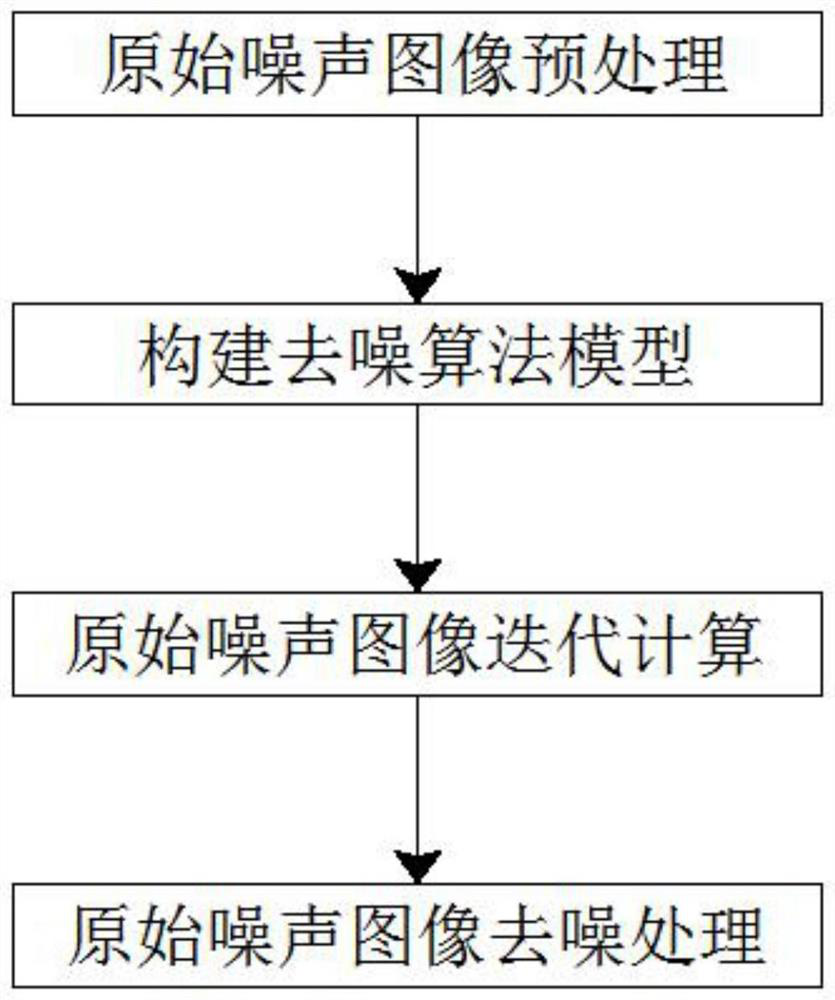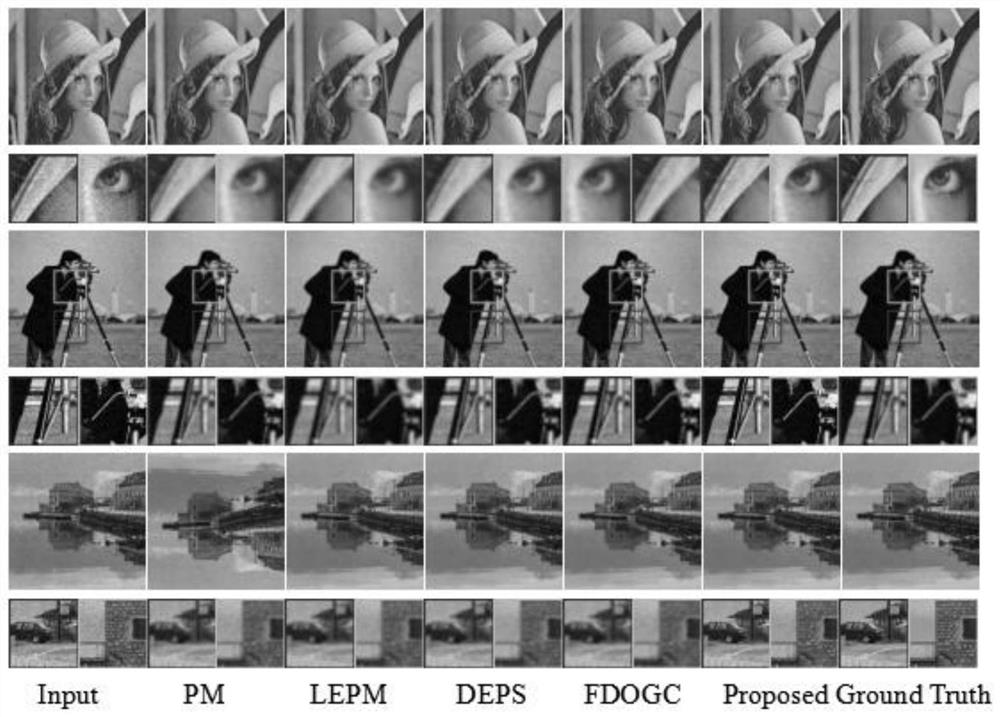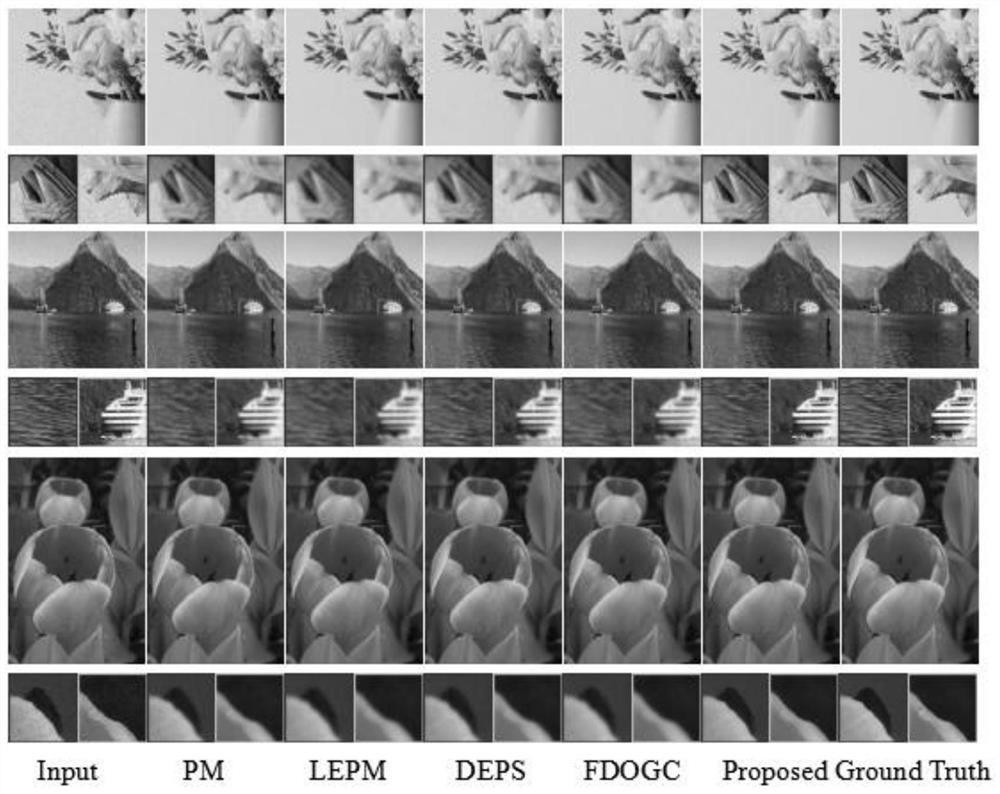Adaptive edge preserving denoising method based on anisotropic diffusion model
A diffusion model and edge preservation technology, applied in the field of image processing, can solve the problem that the diffusion function of the PM model cannot converge quickly, is prone to "block effect, and needs to be improved, and achieves improved image fidelity, good effect, and good diffusion." effect of speed
- Summary
- Abstract
- Description
- Claims
- Application Information
AI Technical Summary
Problems solved by technology
Method used
Image
Examples
Embodiment 1
[0039] see figure 1 , the present embodiment provides an adaptive edge-preserving denoising method based on an anisotropic diffusion model, comprising the following steps:
[0040] step one
[0041] First read the original noise image to be denoised, and then perform Gaussian filtering on the noise image to obtain a preprocessed image;
[0042] step two
[0043] On the basis of the anisotropic diffusion model, Gaussian curvature is introduced into the adaptive image denoising algorithm model, edge detection is performed by image gradient, and then combined with the properties of Gaussian curvature and fractional differential operator, the score is established by the local variance of the image Order differential operator, add regularization term, construct adaptive edge-preserving denoising algorithm model:
[0044]
[0045] Among them, I 0 is the original image, I 1 for in I 0 On the image processed by Gaussian filtering, t is the diffusion scale, div and Denote th...
Embodiment 2
[0057] see figure 2 , to Gaussian noise σ=0.001 and multiplicative noise σ=0.005 "Lena", "photographer" and "village" grayscale images to carry out denoising experiment, use the method of the present invention and other several methods respectively in the experiment A comparison was made and the results are shown in Table 1 below. The parameters are set as follows: the number of iterations is 20, the threshold k 0 is 8, t=1 / 7, λ=0.01, β=1.5.
[0058] Table 1 Comparison table of grayscale images using different denoising methods under each index
[0059] method PSNR SSIM RMSE PM 30.1910 0.8247 0.0246 LEPM 27.7090 0.7866 0.0336 DEPS 30.2095 0.8248 0.0245 FDOGC 27.7117 0.7865 0.0464 proposed 31.1550 0.8472 0.0216
[0060] The gray scale images of "Lena", "Photographer" and "Village" are 512*512, 256*256, 700*700 respectively, Gaussian noise and multiplicative noise with variance of 0.001 and 0.005 are added to these ...
Embodiment 3
[0068] see Figure 4 , in order to verify the effectiveness of the method of the present invention in processing medical images, the Gaussian noise σ=0.001 and the multiplicative noise σ=0.005 noise-containing gray-scale MMR images were selected for experiments, and the image size was 256*256. In the experiment, the method of the present invention was compared with several other methods respectively, and the results are shown in Table 3 below.
[0069] Table 3 Comparison table of the results of nuclear magnetic images using different denoising methods under each index
[0070] method PSNR SSIM RMSE PM 27.8698 0.6919 0.0234 LEPM 27.5688 0.6765 0.0242 DEPS 27.7713 0.6919 0.0236 FDOGC 27.4868 0.7254 0.0244 proposed 27.9732 0.7320 0.0231
[0071] It can be seen from the image of the experimental results that, in the edge part, the method of the present invention is the best for edge preservation compared to the other fou...
PUM
 Login to View More
Login to View More Abstract
Description
Claims
Application Information
 Login to View More
Login to View More - R&D
- Intellectual Property
- Life Sciences
- Materials
- Tech Scout
- Unparalleled Data Quality
- Higher Quality Content
- 60% Fewer Hallucinations
Browse by: Latest US Patents, China's latest patents, Technical Efficacy Thesaurus, Application Domain, Technology Topic, Popular Technical Reports.
© 2025 PatSnap. All rights reserved.Legal|Privacy policy|Modern Slavery Act Transparency Statement|Sitemap|About US| Contact US: help@patsnap.com



